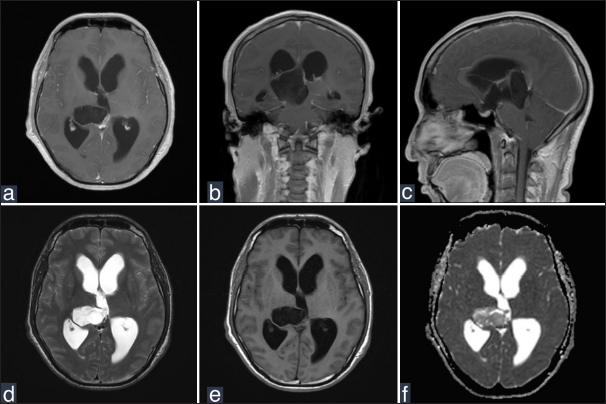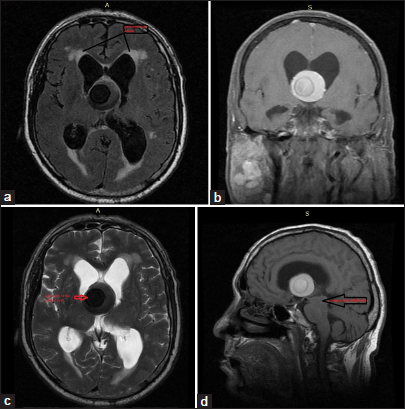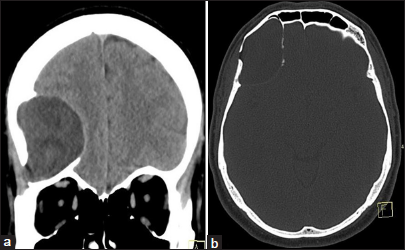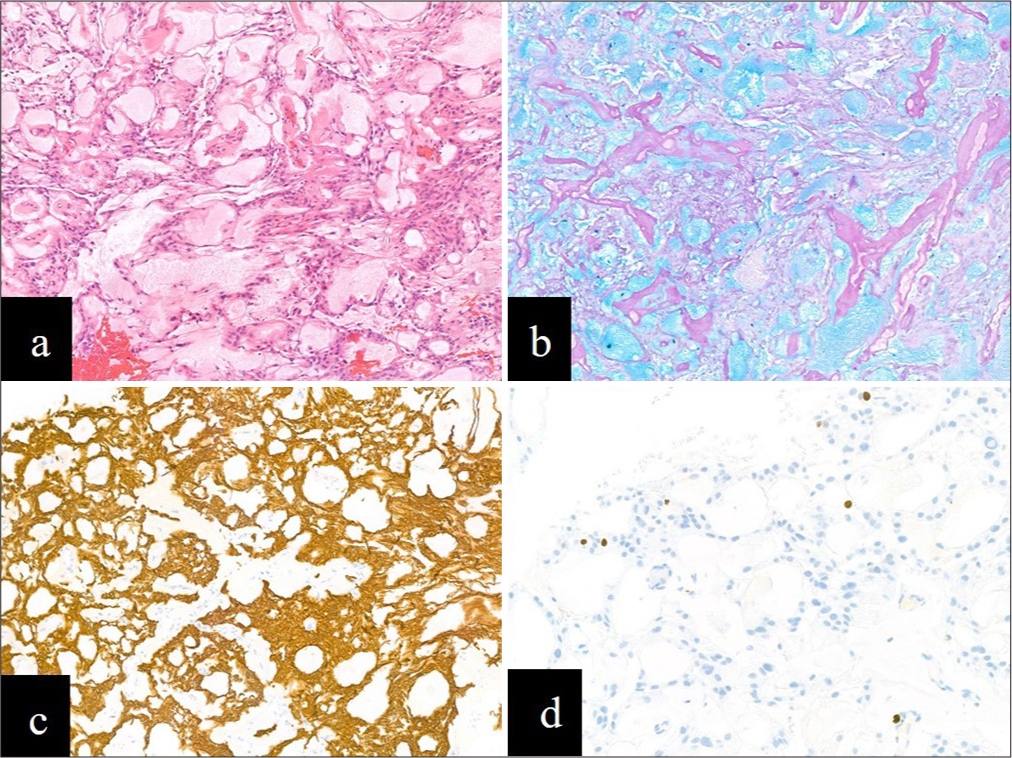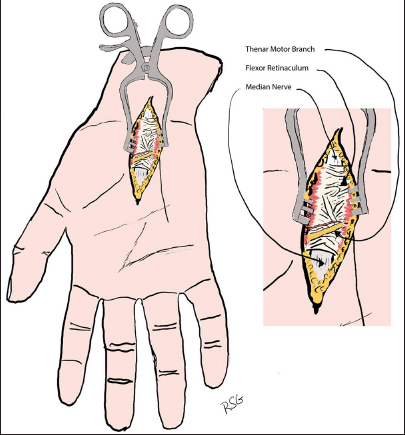Primary intracranial cholesteatoma in the thalamus
Date of publication: 16-May-2025
Background: Primary intracranial cholesteatomas are rare, benign lesions of keratinizing squamous epithelium, often arising from middle ear extension. However, their occurrence in the thalamus is exceptionally rare, with only one prior case reported.
Endoscopic resection of a giant colloid cyst in the cavum septum pellucidum: Illustrative case
Date of publication: 16-May-2025
Background: Colloid cysts (CCs) are a rare type of benign tumor, and the ones >30 mm in diameter are determined as giant CCs. The giant CCs of the cavum septum pellucidum (CSP) are located in the hard-to-reach areas of the brain, and they can be removed microsurgically and endoscopically. At present, the transition from the microsurgical resection to the endoscopic is observed, and researchers demonstrate several benefits of the endoscopic resection over the microsurgical. We noticed the absence of research illustrating the endoscopic resection of the giant CC of the CSP. Therefore, we decided to demonstrate a rare case performed in our hospital.
Successful endovascular occlusion of multiple fusiform aneurysms on the persistent primitive lateral basilovertebral anastomosis
Date of publication: 16-May-2025
Background: The primitive lateral basilovertebral anastomosis (PLBA) is a transient embryonic vessel in the vertebrobasilar system that typically regresses during cerebellar artery development. Persistent PLBA (PPLBA), which forms a vertebrobasilar duplication, is a rare vascular anomaly. This is the first reported case of multiple fusiform aneurysms associated with a PPLBA.
The correlation of optic nerve sheath diameter with clinical outcomes in patients undergoing decompressive craniectomy for cerebral infarction
Date of publication: 16-May-2025
Background: This study aims to investigate the relationship between optic nerve sheath diameter (ONSD) measurements and clinical outcomes in patients undergoing decompressive craniectomy (DC) due to cerebral infarction. The study evaluated the effect of ONSD on intracranial pressure (ICP) and neurological recovery after DC and determined the prognostic value of this measurement.
An atypical intradiploic epidermoid cyst, radiological findings, and surgical management
Date of publication: 16-May-2025
Background: Epidermoid cysts are benign, slow-growing, and extra-axial lesions that typically develop between the brain structures. Intradiploic and intra-axial involvement is exceptionally rare. We present a case of an intradiploic epidermoid cyst with distinct clinical and radiological features. This case highlights an unusual location and radiological presentation of an epidermoid cyst located within the skull base and may be misdiagnosed as other pathologies.
Extra-neural metastases of recurrent myxopapillary ependymoma: A patient case and literature review
Date of publication: 16-May-2025
Background: Biologically and morphologically distinct from other ependymomas, myxopapillary ependymomas (MPEs) are rare, slow-growing glial tumors originating predominantly from the conus medullaris, cauda equina, or filum terminale. Gross total resection is the standard of care for primary MPE. Nevertheless, despite maximal resection, the risk of recurrence, usually within the neural axis, remains high. However, extra-neural metastases can also occur. Due to the rarity of the entity, there is a lack of consensus on the management of recurrences and extra-neural metastatic disease. We present a case report and literature review of this rare ependymal tumor.
Chronic subdural hematoma: Clinical experience and recurrence risk factors in a Mexican neurosurgery residency training program
Date of publication: 16-May-2025
Background: Chronic subdural hematoma (CSDH) recurrence remains a challenge, with risk factors still debated.
Anomalous origin of the thenar motor branch encountered during carpal tunnel release
Date of publication: 16-May-2025
Background: This illustrative case demonstrates the thenar motor branch (TMB) arising from the median nerve proper through the palmaris fascia, visualized during a carpal tunnel release procedure.
Craniocervical hypertrophic pachymeningitis
Date of publication: 16-May-2025
Background: Hypertrophic pachymeningitis (HP) is a rare neurological disorder characterized by dural thickening. Here, we discuss the diagnosis and surgical management of a 38-year-old whose myelopathy was attributed to dorsally compressive HP extending from the lower cerebellar fossa to C3.
Postoperative management of diabetes insipidus in a pediatric patient with Rathke’s cleft cyst undergoing transsphenoidal endonasal surgery
Date of publication: 16-May-2025
Background: Postoperative Rathke cleft cyst surgery can cause injury to the pituitary gland or impaired secretion of antidiuretic hormone (ADH), leading to central diabetes insipidus (DI). This case report describes the successful postoperative management of DI in pediatric patients with Rathke’s cleft cyst who underwent transsphenoidal endonasal tumor surgery.


